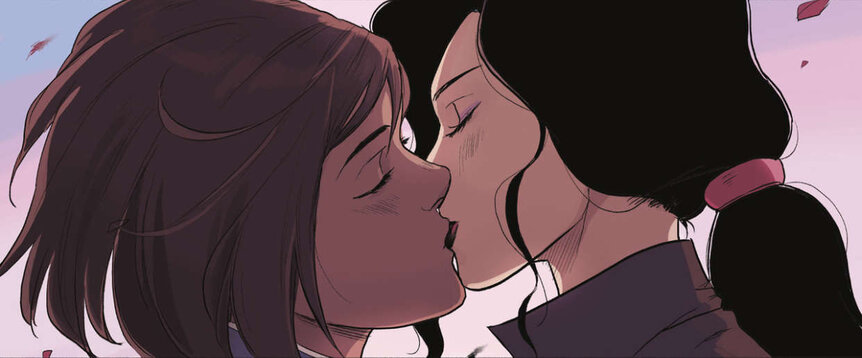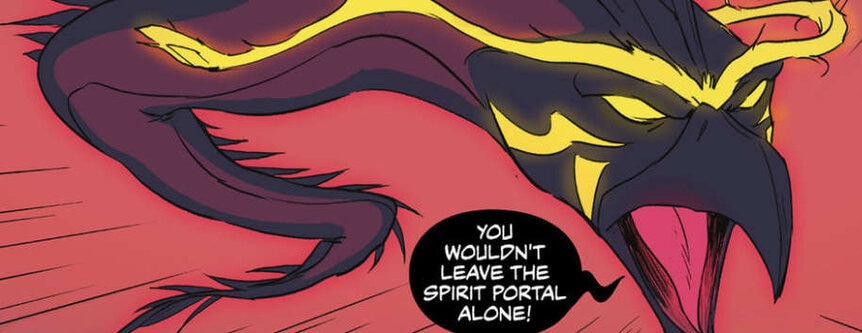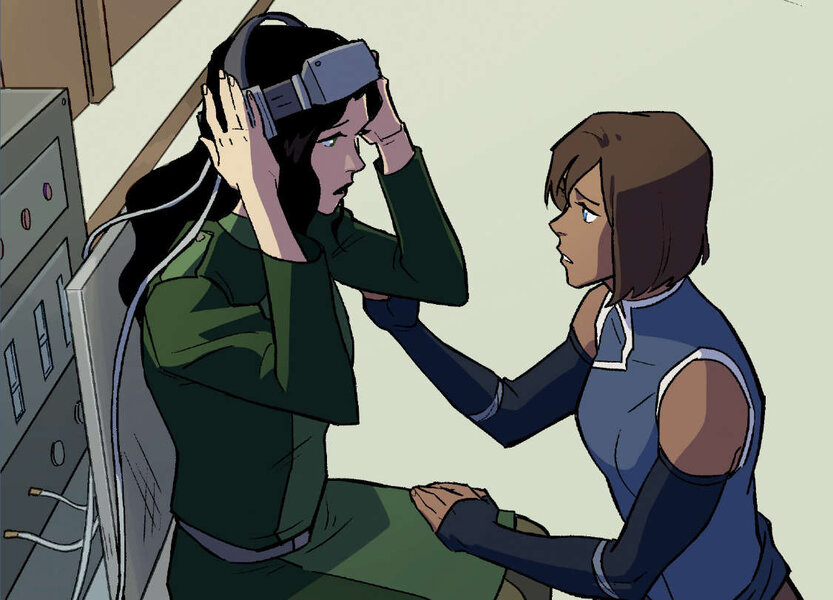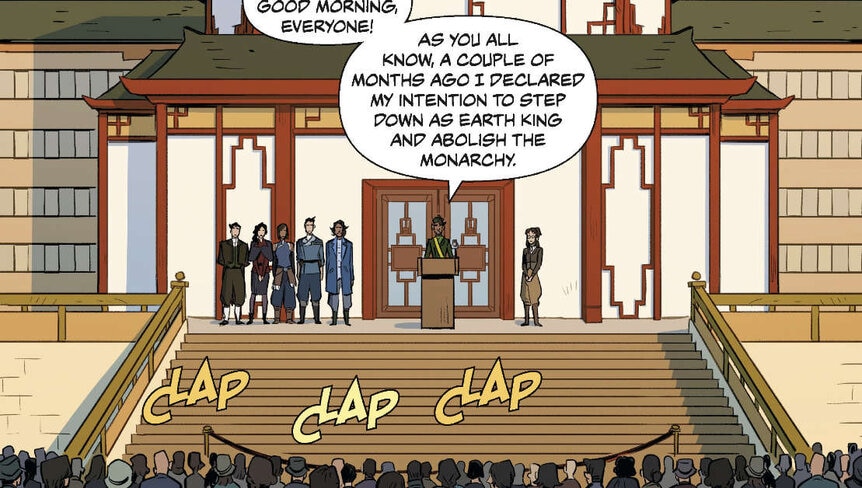Create a free profile to get unlimited access to exclusive videos, sweepstakes, and more!
Finished streaming Legend of Korra? Here's what the comics mean for the characters' future
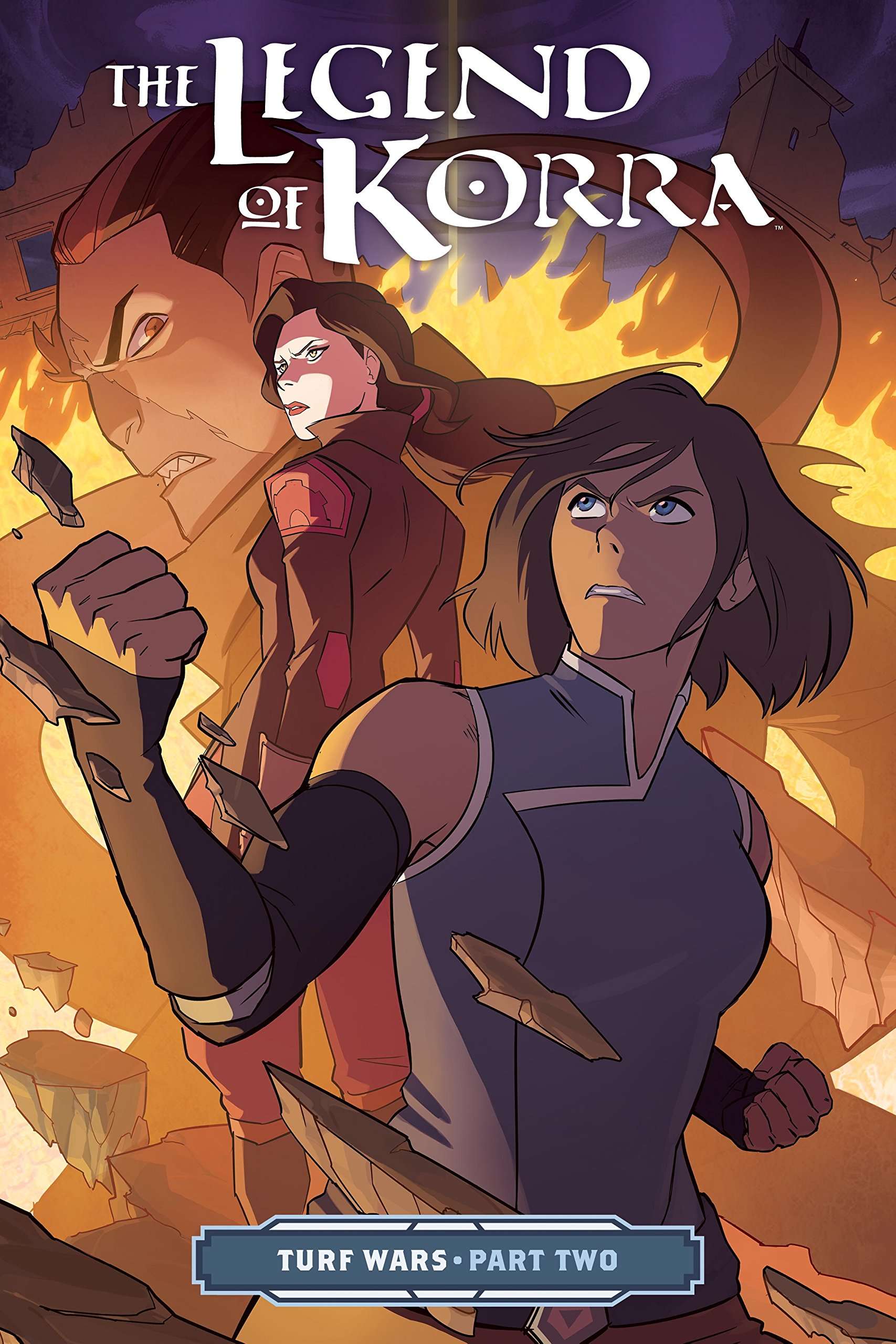
In the four years between Avatar: The Last Airbender going off the air, and The Legend of Korra still forming a twinkle in creators Bryan Konietzko and Michael Dante DiMartino's eyes, fans missing Aang and the crew could still keep up with their favorite characters and remain immersed in that world thanks to Dark Horse's official A:TLA comics.
The same now holds true for fans of LoK, as the series now also has two whole arcs of sequel comics that follow Korra and her friends' stories after the end of the former Nickelodeon show. However, unlike the previous series of A:TLA comics — which were written by Gene Luen Yang and Faith Erin Hicks, respectively — DiMartino himself has returned to pen what happens next, accompanied by art from Irene Koh and Killian Ng in The Legend of Korra: Turf Wars, and art from Michelle Wong and Ng (again) in The Legend of Korra: Ruins of the Empire.
“I was wary of becoming the kind of property where it was like, ‘Here’s the novelizations and here’s the comics,’ without adding any value to the property,” DiMartino said at this year’s Comic-Con@Home. “That’s why Bryan and I have tried to stay as involved as we have while trying to give them the space to put their own spin on things.”
Part of DiMartino's involvement on the comics end is possibly due to the fact that there probably won't be another TV sequel, thus extending the universe's life further in the form of a third avatar, one who would pick up after Korra's tenure ends. (There is, however, a live-action adaptation of the A:TLA in the works at Netflix, albeit without either creator at the helm, with both Konietzko and DiMartino having recently parted ways with the project.)
But what do the comics mean for Korra and the gang? And what can they tell us about where the series' world is headed, post-Korra and Asami's holding hands and walking into the spirit portal together?
Well, with Legend of Korra now officially having joined Avatar: The Last Airbender on Netflix for all your streaming needs, we did a deep dive into both Turf Wars and Ruins of the Empire, and here's everything you need to know about what happens next in the world of the Avatar:
01. Korra and Asami are still very much a thing
The show may have expressed Korra and Asami's feelings for each other in the finale with a meaningful look and clasped hands — a bold move back in 2014 — but the comics depict their relationship in all its full-fledged glory, featuring everything from (multiple) kisses and their first date, to their slowly navigating coming out as a couple to close friends and family.
This allows DiMartino to actually delve into how the four different nations in the Avatar universe approached queer culture historically, and what it appears to be like now, granting the series a chance at more LGBTQIA representation — especially in the form of newer characters. And while Korra and Asami (thankfully) face little opposition to their relationship in the present, Aang's daughter Kya reminds them that things were not always as they are now, and that this is yet another side effect of the Fire Nation's brutal colonization.
02. The spirit world is still out of balance
Korra's attempts to bridge the human world and the spirit world are still not going so well — a holdover from Aang's time as avatar, when the rift between both worlds was already forming — and having an open spirit portal in the middle of Republic City is definitely not helping matters. For one, the spirits are beginning to take matters into their own hands as they retaliate against humans; and for another, there are some humans who are seeking to try and profit off this link to the spirit realm, which brings up issues people have yet to deal with in this newer, more modern world. Like what happens when a spirit portal opens on private land? Can individuals regulate who has access?
03. Technology keeps complicating things
The age of machines that began during Aang's time, has continued long into Korra's. Not only is the world now full of things like trains, automobiles, mecha suits, and motion pictures (some even starring Bolin as the brave hero Nuktuk), but non-bender weapons themselves have gotten more sophisticated, and a lot deadlier, as brilliant inventors like Asami and Baatar Jr. Beifong keep finding new ways to push already pre-existing technology further.
This, of course, brings up something else: the issue of metalbending. Unlike her predecessors in the Avatar line, Korra is the first one who can bend metal, something taught to her by Toph's daughter, Suyin Beifong. While Korra's ability to do so gives her some leverage in a world that continues to try and develop past the need for bending, it also gives the police and the earthbenders who can bend metal a bit of an advantage, as seen through how Kuvira was able to wield her powers in a way that was so effective that it allowed her to go toe-to-toe with Korra. (Of course, some of this can also be chalked up to her brilliance at strategy.)
04. Politics remains a minefield
As Aang and Zuko quickly learned following the end fo the Hundred Years' War, politics isn't so simple anymore. What might work in theory may not in practice, and that's just what Earth King Wu encounters when he tries to transition the Earth Kingdom to a democracy. More than that, as Republic City's presidential race between President Raiko and Zhu Li (yes, that Zhu Li) proves, new forms of government come with new kinds of tactics — including "spin" and video ads designed to capture your opponent in a less than flattering light in an effort to garner voters.
